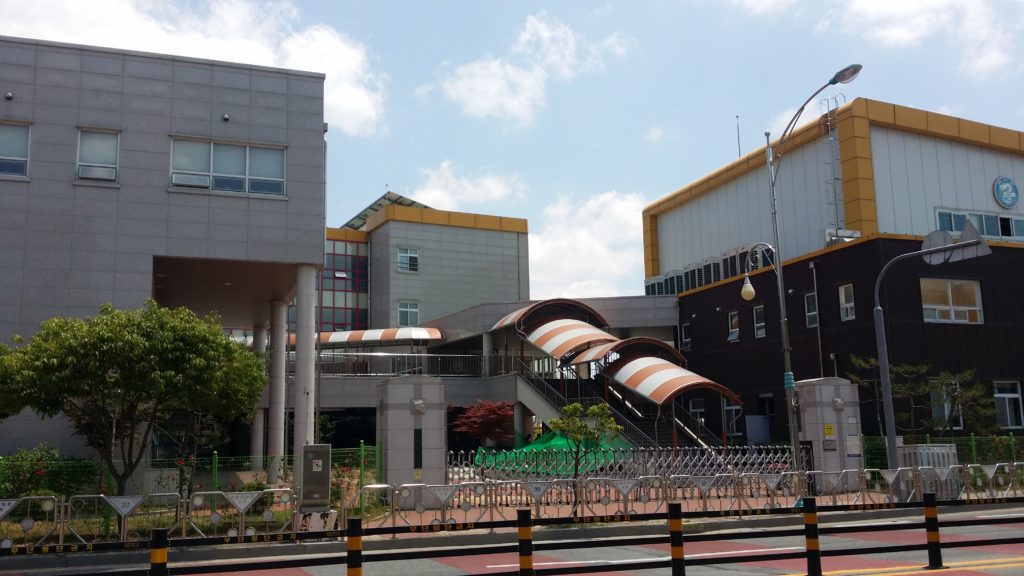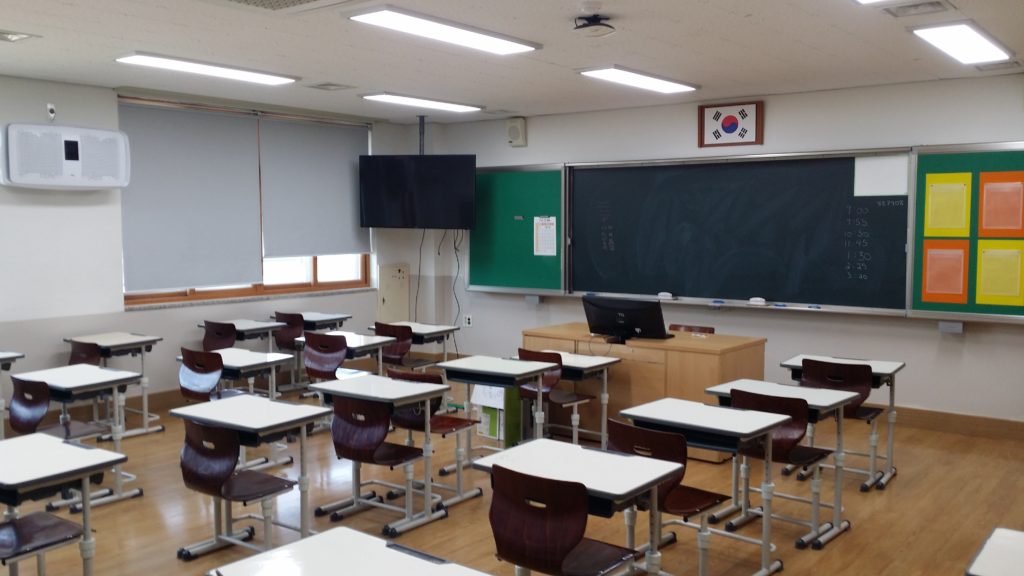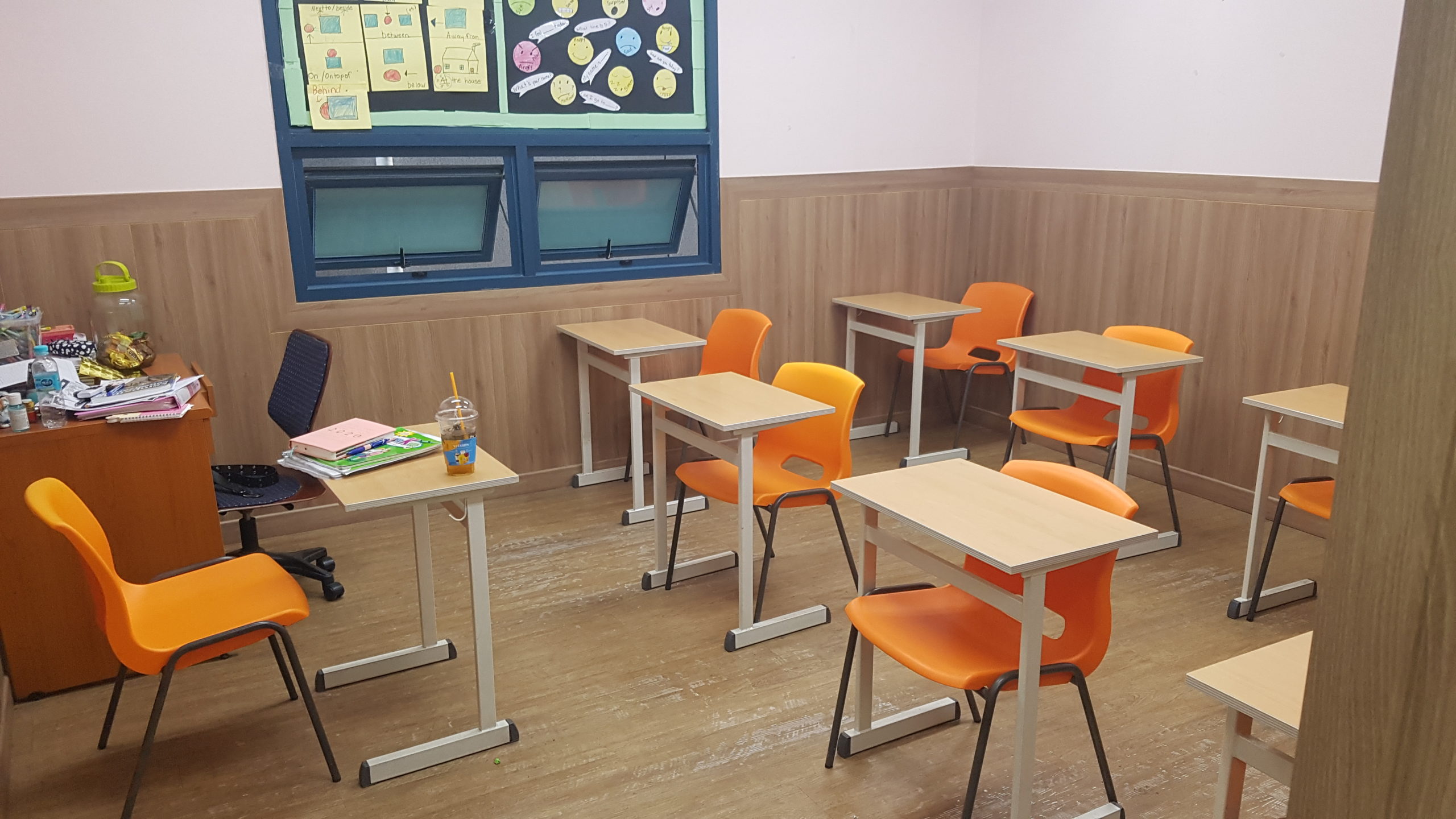Hagwon vs. Public School
A Couple’s Point of View
Written and photographed by Katy Clements.
When we travel back home to visit with family and friends, we are always bombarded with questions regarding our work. Even though we both have the same job title, we work in two different types of institutions. I work in a hagwon (학원, private academy), and my husband works in a public school. Through our relationship, we have learned to work around the particulars of each job, but it is not until we explain the differences to friends that we really notice. Education in Korea is a chief cornerstone of life and an ever growing business. Typically, young citizens are required to commit to grueling hours of studying for exams and tests. Because most want to aspire to enter an elite university, the demand to learn English is high, and this leads to the desire for native English-speaking instructors.
When I applied for my position, I worked with a recruiting agency. Recruiters are scouts that represent a hagwon for a finder’s fee. If I am unimpressed with the schools that a particular recruiter is representing, I can find an available job posting on my own or work with different recruiters. Hagwon positions are abundant and they hire year-round, so job availability is not an issue. My husband applied with the Jeollanamdo Language Program (JLP), and while I was able to juggle multiple job inquiries, he was only able to work with the agency he first applied with. Additionally, the intake for public school is usually open twice a year: April and August. The requirements for either institute are the same. Both of us had to have apostilled degrees, at least a bachelor’s degree, a background check, and a health check. However, public school workers are typically picked up at the airport, trained during an orientation period, taken to get their health checks, and then dropped off at their new apartment. My experience was that I had to go get health checks myself and find my own transportation from the airport.

My husband’s school has a typical work-day schedule from 9 a.m. to 5 p.m., whereas I have worked in hagwons that vary in placement of work hours. Kindergarten hagwons, which also serve elementary, middle, and high school students, open early and close late, whereas adult hagwons are typically open in the evening. Pay is a huge difference between public school and hagwon workers. A public school worker can see a raise in their yearly pay and can top out at 2.7 million won, but a hagwon worker can usually only receive the maximum of 2.3 million won. A public school worker can also acquire a travel school (a second school to teach at) or work in a rural area, which can lead to a bonus. It can be argued that hagwon employees are paid less because a typical hagwon class size can reach up to ten pupils, whereas a public school class can have 35 pupils or more per class. Even though public schools have bigger classes, I believe that in most hagwons teachers are required to teach more vigorously because they are a business funded by parents who pay for a service. In addition, vacation time is a huge difference for us as a married couple. I will only receive national holidays and five working days off per term. My husband has 26 paid working days plus national and public holidays.

Teaching style is another key difference. In a public school, you have the benefit of working and, in most schools, brainstorming with a co-teacher. In a hagwon, you are often alone and class discipline is often left to the foreign teacher. Furthermore, in a public school there is often only one foreign teacher, but in a hagwon there can be up to five in some cases. Public schools also have access to more technology than most hagwons. For example, in my hagwon, I only have the use of a whiteboard. Typically, I make my own visual aids, which can be costly to me. My husband has access to a big-screen monitor where he can display PowerPoints, but he usually has to take work home to prepare his lessons ahead of time. Hagwon teachers are tasked with drilling the students and having them memorize vocabulary lists and passages, but rarely am I required to do work on my own time. Moreover, job security is also a desirable benefit of public school life. You can be assured that if you do well in public school, then you will be able to renew. In a hagwon, however, there is generally a bigger turnover. Even though there are major differences between the two institutions, they share a common goal: to provide guided and fun lessons for students. Each job comes with its benefits and detriments, but overall we get to interact with children who are excited to see us. Most children view English class as a break in their busy day and are excited to see us. No matter where you teach, try and empathize with the students. They are the one aspect our jobs have in common.

THE AUTHOR
Katy Clements is a hagwon teacher in Mokpo, South Korea.




